Lab Blocks / Kibble
 There are three main brands of commercial pet rat diets in the U.S. that are considered to be high quality. The companies who manufacturer these diets are made by Envigo (formerly Harlan), Oxbow Animal Health and Mazuri.
There are three main brands of commercial pet rat diets in the U.S. that are considered to be high quality. The companies who manufacturer these diets are made by Envigo (formerly Harlan), Oxbow Animal Health and Mazuri.
I would not recommend feeding any of the rodent blocks or seed mixes typically sold in most pet stores. The manufacturers of the commercial pet rat diets sold in almost all pet stores do not come close to having done the necessary comprehensive research on the nutritional needs of rats. The ONLY quality diet sometimes found in U.S. pet stores are the Oxbow diets.
 Before giving an overview of the three major brands of commercial rat diets, I’d like to talk a little about soy and protein.
Before giving an overview of the three major brands of commercial rat diets, I’d like to talk a little about soy and protein.
Soy
From the research I’ve done, I believe it is helpful to feed soy, especially to females. Soy has been shown to reduce the occurrences of mammary tumors. After upper respiratory infections, mammary tumors are the second most prevalent health concern for pet rats.
Please Note: There are plenty of people who believe the opposite, that soy actually causes mammary tumors.
Protein
There are varying opinions on how much protein should be in a rat’s diet. Most experts believe the need for protein decreases as a rat ages. The ranges recommended throughout a rat’s lifespan are from 23-24% for babies and young rats down to as low as 5% for geriatric rats. I have not, however, seen any commercially available diets that have only 5% protein.
Envigo
Envigo (formerly Harlan) Teklad lab blocks are designed specifically for lab rats and are one of the highest quality foods you can buy. Even though they look like particle board, Envigo Teklad lab blocks are a nutritionally complete food. They contain all the essential vitamins, minerals, amino acids, fatty acids and macronutrients your rat needs.
However, I have to say I cringe when thinking that these diets are primarily designed for laboratory rats. (Hence the name “lab blocks”.) I am not a supporter of using any animals for laboratory testing. Unfortunately, this diet is still held in high esteem by many experienced pet rat owners even though the manufacturer created this diet for laboratory rats who suffer and even die during and after being subjected to experimental tests. Not only does Envigo manufacture and sell laboratory animal diets, but they also breed and sell the animals used for scientific experiments. The lab animals they sell range from multiple types and strains of rats to mice, guinea pigs, rabbits and dogs.
In June of 2015 Harlan Laboratories merged with Huntingdon Life Sciences to form the company, Envigo. Huntingdon Life Sciences is one of the world’s largest animal testing labs. In good conscience, I’ve stopped feeding this diet to my own rats. I am still including the information on Envigo Teklad lab blocks here, however, since many pet rat owners and veterinarians still believe it to be one of the best diets.
Here are the three Teklad lab block formulas most widely used for pet rats:
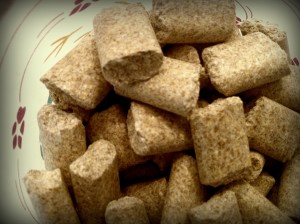
- Teklad 8604 – supports growth and reproduction (24% protein)
- Teklad 2018 – for pregnant, nursing or growing rats up to 8 months (18% protein)
- Teklad 2014 – maintenance formula for the average size adult rat, also good for overweight and/or older rats (14% protein)
Ingredients in the above two Teklad lab block formulas contain no fish meal, meat meals or meat by-products, no alfalfa meal and reduced or eliminated soybean meal. (Soybean meal is only included in the ingredients of Teklad 2018.) The last two digits of each of the Teklad diets above corresponds to the percentage of protein in each diet. Teklad believes low fat, low protein diets promote longevity and normal body weight in rodents. The Envigo Teklad lab blocks specified above have only 4-6% fat.
Another diet, Teklad 8604, has soybean meal listed as the first ingredient and has a protein content of 24.3%. Teklad 8604 is designed to support gestation, lactation, and growth of rodents. This diet is a good one for young, (under 6 months old,) unspayed female rats since soybean meal is listed as the first ingredient.
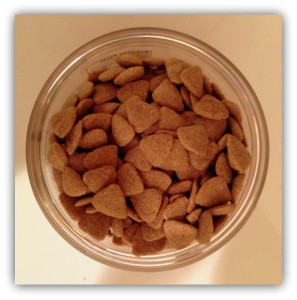
Oxbow Essentials
Oxbow Animal Health offers two commercial pet rat diets. One is for adults and the other is for young, pregnant or nursing rats.
For adults, Oxbow Essentials Adult Rat Food, is a small kibble with 15% crude protein. My rats’ veterinarian introduced this diet to me. Oxbow’s adult, Regal Rat, diet is nutritionally complete and is low-fat to help maintain an ideal weight. The first five ingredients are Whole Brown Rice, Oat Groats, Wheat Bran, Wheat, and Soybean Meal.
For young rats, Oxbow Essentials Mouse & Young Rat Food contains 18% protein. (Mice of all ages can also eat this diet.) Oxbow’s young rat food contains added vitamins and minerals and is nutritionally complete. This diet’s first ingredient listed is corn, however, so it’s not ideal. The first five ingredients listed are Ground Corn, Soybean Meal, Wheat Middlings, Soybean Hulls, and Dried Whey. It contains no artificial preservatives, colors or flavors. It’s in the shape of a lab block. (I don’t know why they decided to make the young rat food a big block and the adult food a small kibble!)
I’ve been able to find the Oxbow diets in some, but not all, U.S. pet stores. Both the adult and young rat diets (Oxbow Essentials Adult Rat and Oxbow Essentials Mouse & Young Rat) can easily be ordered online.
Mazuri
 Mazuri’s Rat & Mouse Diet is their only pet rat formulation. They promote it as meeting the nutritional requirements for “breeding and non-breeding rodents”. It comes in the form of a lab block and, at 23%, this diet is very high in protein. Dehulled Soybean Meal is the first ingredient which makes it ideal for female rats if you believe that soy helps prevent mammary tumors (which I do). The Mazuri Rat & Mouse diet is a vegetable-based formulation. Because of the high level of protein, I would only feed this diet to very young rats since many experts advocate feeding decreasing levels of protein as a rat ages.
Mazuri’s Rat & Mouse Diet is their only pet rat formulation. They promote it as meeting the nutritional requirements for “breeding and non-breeding rodents”. It comes in the form of a lab block and, at 23%, this diet is very high in protein. Dehulled Soybean Meal is the first ingredient which makes it ideal for female rats if you believe that soy helps prevent mammary tumors (which I do). The Mazuri Rat & Mouse diet is a vegetable-based formulation. Because of the high level of protein, I would only feed this diet to very young rats since many experts advocate feeding decreasing levels of protein as a rat ages.
Mazuri also makes diets for Zebra, Moose, Polar Bear and even Reindeer.
Consult Your Veterinarian
Make sure to ask your vet which food they recommend you feed your rats. Only a veterinarian who’s experienced with and knowledgeable about pet rats can help you make the best diet selection. We’re very fortunate there are diets formulated specifically for the nutritional needs of our rats. Most vets will let you know that about 80% of your rats’ diet should include at least one of these high quality diets. The other 20% can be fresh, whole, organic foods.
Last updated 7/31/23


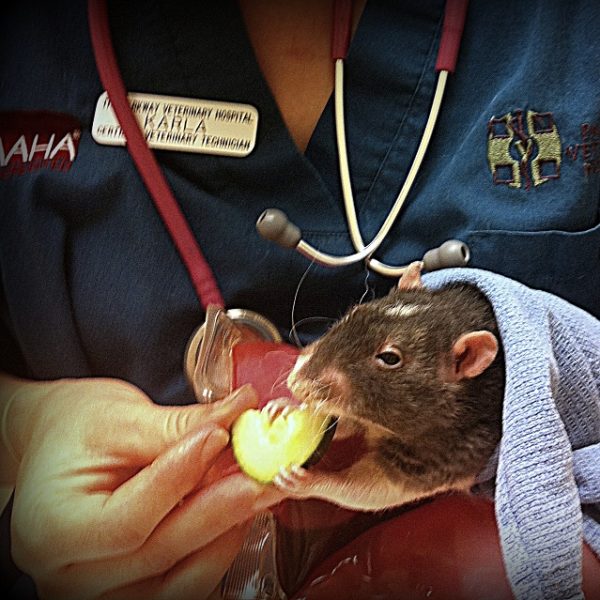
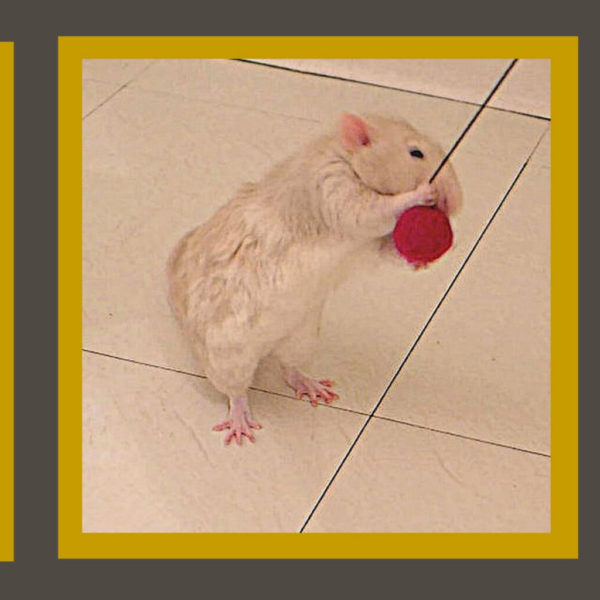


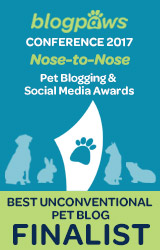
I’m feeding my rats envigo and mazuri supplemented with fruits and vegetables topped with green mush and my rats prefer envigo quite a bit I saw some where you said that giving both of them is better but my rats will eat the envigo first and only eat the Mazuri food when they’re running low should I keep feeding them both or just switch to the one they prefer
Hi Arie,
Feeding your rats just the Envigo diet is fine, if that’s what they prefer. I’d be able to answer your question even better if you can please let me know how old your rats are and which Envigo diet you’re feeding them. Another option is you could have the Mazuri available as a backup/treat (i.e. not their main diet) so they’d have a little variety.
Sounds like you’re doing a great job by supplementing with fruits and vegetables topped with Green Mush!
Feel free to let me know the ages of your rats. Also, don’t hesitate to let me know if you have any other questions and/or need any clarification.
Best Wishes to You & Your Rats,
Jasmine | About Pet Rats
What commercial rat food is the best for young male rats? (I’m aiming to feed them a high quality brand of lab blocks, supplemented with fresh fruits and vegetables and any necessary vitamins or minerals that aren’t supplied by their lab blocks, and also until they are 6 months old, oysters or beef liver.) Should I feed them Oxbow Essentials-Young rat and mice food, or is there a better brand of rat food for them until they are older?
Hi There!
There are 3 main commercial diets for young rats in the U.S. They are all listed above as well: the Oxbow Essentials Mouse & Young Rat Food, the Mazuri Rat & Mouse Diet and I just added the Envigo Teklad 8604 diet. My personal choice would be the Mazuri diet. The best person to ask this question, though, will be your rats’ veterinarian. It’s great that you’re planning ahead. You can always start with one of these diets in the beginning and then transition slowly to whatever your vet recommends. They are all high quality diets.
In my opinion, if you feed one of the diets mentioned above, there would be no need to add oysters, beef liver or any supplements. Again, though, that would be a great topic to go over with your rats’ veterinarian when you bring them in for their first check-up.
Hope that’s helpful. Don’t hesitate to let me know if you have any other questions any time. I’m excited for you—-enjoy your new rats when you get them! Great job doing the research ahead of time.
Jasmine | About Pet Rats
There is also the option of researching a good Shunamite mixed rat diet! This offers nutrients as well as mental stimulation and variety.
Hi Rachel,
Thanks for your comment and for sharing your experience. I know the Shunamite diet has a lot of fans. Personally, I still feed my rats a high quality commercially made diet. My current favorite is Oxbow Essentials Regal Rat Adult Rat Food*. So much research went into making this diet. Because it’s a kibble made of an evenly mixed blend of food, you can be assured your rat is getting all the nutrition it needs in every bite. With mixes, sometimes rats will pick and choose what they want to eat and therefore don’t end up eating a nutritionally complete diet.
This is my opinion, of course. All of the rat veterinarians I’ve taken my rats to also promote eating a commercial diet such as Oxbow’s. I really appreciate, however, anyone offering alternatives that have worked for them.
Best Wishes to You & Your Rats,
Jasmine | About Pet Rats
*This is an affiliate link which means About Pet Rats will earn a very small commision at no extra cost to you. This helps support the website and my ability to answer questions from pet rat lovers all over the world.
Regarding the Teklad/Harlan blocks, I am of two minds: I do not like the use/breeding/sale of lab rats and find it abominable; however, since laboratory rats need to be given the same diet and scientists must be sure diet itself is not influencing negative health outcomes of experiments, the entire point of the “lab blocks” is to provide optimal nutrition. This means the Teklad/Harlan diets are pretty much the highest quality, best-researched rat foods on the market, and therefore the best for a pet rat. So the question then becomes do we avoid giving our rats the best possible diet out of principle — and then, have we in some ways put the principle over not supporting an industry we disapprove of ahead of the principle of feeding our pet rats the best diet? It is a conundrum, and I must say the choice has given me fits on both sides… I do currently feed the Harlan/Teklad because it is easily available at the small animal rescue and because I can get the different formulations that are best for my growing adolescents, maintenance-fed adults, and geriatric rats (I adopted all of my rats — currently 10, including 5 young brothers — from this amazing organization). I do like that their nutrition is premium, but also feel sick that the same company exploits rats…
Well said! It is so awful to have to choose between feeding the highest quality diet or choosing not to buy it because it’s helping support and promote the use of laboratory rats.
That’s so wonderful you’ve adopted your rats from a small animal rescue. I’m curious to know whether or not your rats all live together or if you have them separated according to their ages so they have the age-appropriate food in their cage? This is one thing I haven’t found an ideal solution for yet—-how to feed optimum, age-appropriate diets when different age groups live together in the same cage.
Thanks so much for sharing your thoughts!
Jasmine
My rats came with the lab blocks and all of them were sick from a poor diet. My vet told me that the lab blocks are too high in protein and that rats in the lab are kept in a very controlled environment so it doesn’t make sense to offer these to pet rats. My girls have been on the shunamite kidney friendly diet for a couple of months now and are doing so much better.
Science Selective is also very good. Super nice coat shine and half the phosphorus Oxbow has.
I feed half science selective, half shunamite straights
Hi Morgan,
Thanks for sharing what you’re feeding your rats. I really appreciate your bringing up Science Selective. I’m going to check further into this diet with one of my rats’ veterinarians. I believe this diet wasn’t available in the U.S. until recently….or maybe it’s a new formulation? I may need to add it to the options on this webpage.
That’s great to know your rats are doing well with half Science Selective and half Shunamite Straights. It’s interesting that The Scuttling Gourmet (based in the U.K.) advocates feeding mixes as being a way to offer more variety. This is in sharp contrast to every vet with whom I’ve ever worked here in the U.S. who recommend feeding 80% (non-mix) commercial diets and supplementing with fresh whole foods for the other 20%. There are definitely different philosophies and perspectives so I truly do appreciate your comments here.
Best Wishes to You & Your Rats,
Jasmine | About Pet Rats
Hi Emma,
Thanks for sharing your experiences with lab blocks. Just to clarify: I only mention the lab blocks above because I’ve had veterinarians recommend them for my rats. There are different levels of protein available. (The lowest is in Envigo’s 2014 with 14% protein.) That said, I do not advocate feeding lab blocks myself because I don’t like supporting the lab industry.
I’d love to hear more about the Shunamite kidney friendly diet you’re feeding your rats. That’s great they’re doing well on this diet. Do you mind sharing more information? My questions are: Do you buy your rats’ diet as a mix or do you make it yourself? Also, in what country do you live? (It’s good to be able to share about what foods are available in different countries since they’re not all the same.)
My current personal favorite in the U.S. is the Oxbow adult rat diet at this time. I would love to be able to feed all fresh, organic food. However, it’s so difficult to make sure they eat everything whenever it’s a mixture of foods—unless it’s all ground together. My rats’ veterinarians always advocate feeding a high quality commercial diet since a lot of scientific research goes into getting the ideal combination of nutrients.
Thanks again for sharing your rat diet experience!
Best Wishes to You & Your Rats,
Jasmine
Hi Jasmine. I live in New Zealand and make my rats mix myself from ingredients listed on the rat rations website https://ratrations.co.uk/ . In my base mix I also include science selective (which I need to use up) but though I found the ingredients good, I noticed that my rats weren’t getting enough fiber from them. I also like beaphar which my rats are crazy over!
I know that a lot of people worry about them picking out their favorites and leaving the rest but I’ve noticed that this only happens if I feed too much at mealtimes. It’s much more fun for them too!
Warm Regards
Emma
Hi Emma,
Thanks so much for the additional details. It’s so helpful to hear about what’s available in New Zealand and what is working well for your rats. Beaphar is a brand that’s not available in the U.S.
I appreciate your observation that your rats don’t pick out only their favorites from their mix unless you give them too much. I bet it IS more fun for them to have that variety, like you said.
I like reading the information on the website The Scuttling Gourmet—which includes information on kidney friendly diets and links to Rat Rations the site you mentioned. The idea of scatter feeding found on this page sounds good. —You may already be doing this, too.
Thanks again for sharing such helpful information!
Jasmine
Mazuri actually makes many rodent diets, including breeders diets for mice and rats with 6%, 9% and 11% fat, depending on your needs.
Hi Lauren,
Thanks for your comment. I’m not sure if you meant to write about protein levels rather than fat….just in case you meant to write about protein levels, Paul Littlefield did comment previously that Mazuri has a 16% protein diet for adult rats called Mazuri Rodent Breeder 6F.
Do you know if this diet available in smaller quantities for non-breeding rat owners? Or did you have additional information you wanted to bring up about fat instead of protein?
I appreciate your sharing your knowledge and expertise.
Best Wishes,
Jasmine | About Pet Rats
How do the Purina companies Lab Blocks rate?
My rats have liked them, and I’ve heard the hard blocks help keep their teeth worn down. I buy fresh batches from a local feed store that sells a large amount.
PS- I’ve had problems with stale food mixes and open bin Lab Blocks in several pet stores, even if the package date says they are within the sell date. Some have actually smelled rancid. The added vitamins and antioxidants arent much good then!
Hi Lucy,
I totally agree it’s not a good idea to buy lab blocks from bins.
My current favorite diet for adult rats is the Oxbow Essentials Regal Rat food. Compared to other diets, the first five ingredients in the Oxbow adult diet are much healthier. Both Harlan Teklad and Purina make formulas for rats used in laboratory experiments. I really like the fact that Oxbow does not make diets for laboratory rats.
The Oxbow Essentials Regal Rat diet is available online. The lowest price right now is $9.34 for a 2.5 lb bag from chewy.com.
Listed below are the protein levels and the first five ingredients of several rat diets including Purina. The ideal level of protein for adult rats is 14-15%. You’ll see that the Oxbow diet has an appropriate level of protein and that the first five ingredients are much healthier than what’s found in the other diets. You’ll also see that the Purina rat diets contain too much protein.
There are two Purina rat blocks I’ve heard of people feeding their rats:
Purina Laboratory Rodent Diet 5001
Protein = 25%
First five ingredients = Dehulled soybean meal, ground corn, dried beet pulp, fish meal, ground oats
Purina Rat Diet 5012
Protein = 25%
First five ingredients = Ground corn, dehulled soybean meal, fish meal, wheat middlings, cane molasses
Harlan Teklad 2014 [Harlan Teklad is also sold under the company name of Envigo or as Native Earth]
Protein = 14%
First five ingredients = Wheat middlings, ground wheat, ground corn, corn gluten meal, calcium carbonate
Oxbow Essentials Regal Rat
Protein = 15%
First five ingredients = Whole brown rice, oat groats, wheat bran, Wheat, Soybean Meal
Thanks for asking your excellent question!
Best Wishes to You & Your Rats,
Jasmine | About Pet Rats
Hello, I have been reading over a lot of the info and noticed you mentioned lower protein diets. I recently got a harley rat and was not prepared for them to need a special diet. I recently learned they are protein sensitive and need a low protein diet. I have not been able to find such diets online and was wondering if you knew or could point me in the direction so I can properly care for my guy.
Hi There,
As you may already know, Harley rats were first bred in 2002. At that time they did frequently develop skin issues due to protein sensitivity. However, as breeding practices have progressed, I don’t believe the protein levels of their diets is as big an issue as it used to be
Has your rat shown symptoms of protein sensitivity?
If you’re not seeing any signs that your rat is sensitive to protein, I would think that the Harlan Teklad 2014 would be a great diet for your guy if you do want to keep him on the low-protein side. (The Oxbow Adult diet—which is one of my favorites—has 15% protein and the Harlan Teklad 2014 has 14% protein.) 14% is as low as commercial diets go, as far as I know.
One of my current rats looks as if he’s a Harley and he and his friend are on the 14% protein diet.
If your rat is showing any symptoms, I’d first have him examined by a veterinarian (who’s knowledgeable about pet rats) to rule out external parasites or any other cause of the symptoms. If your vet believes he should be on a lower than 14% protein diet, you can always supplement the commercial diet with a larger quantity of vegetables and grains.
I hope this addresses your question and gives you some ideas on how best to care for your Harley. You sound like a fantastic rat parent!
Best Wishes to You & Your Rats,
Jasmine | About Pet Rats
Another brand not listed here that I wouldn’t super recommend due to the low protein is Selective for rats. My vet recommended this to me because she got her facts wrong so now I have a bag of it kind of just sitting here. It has 12% protein and the first ingredients are Whole Wheat, Soybean Meal, whole barley, whole oats, dried apples. It comes in an oxbow shaped kibble and it’s hard food.
Hi Laurence,
Thanks for providing the information about the Supreme Selective Fortified Diet for Rats. I’ve heard that lower protein diets are especially good for older male rats. Debbie Ducommun from The Rat Fan Club mentions 14% protein as being good for older males. I agree, though, that 12% is definitely too low for young rats.
I am a big fan of the Oxbow Essentials Adult Rat Diet which seems to have optimum levels of the proper vitamins and minerals as well as a 15% protein level.
I’d like to do some further research into pet rat nutrition. I wish there was an organic, freshly blended diet available, that had all of the nutritional ingredients pet rats need.
Thank you again, Laurence for bringing up this diet as well as your opinion on it. I’m curious to know what diet you’ve decided to feed your rats.
Best Wishes to You & Your Rats,
Jasmine | About Pet Rats
All this information is wonderful but as someone who is going to be a first time mother to 2, 6 week female rats I’m still a little confused and would like a little bit of guidance! I just want to give them the right food. Maybe a few tips what to give them on he side too?
Thank you so much!
Hi Victoria!
Congratulations on preparing to become a first-time mother to your new baby rats! I’m so glad to hear you’re interested in learning more about proper pet rat nutrition.
A good diet for babies is either the Oxbow Essentials – Mouse & Young Rat Food or the Harlan Teklad 8604. Both are high in soy with the Harlan Tekald listing soy as the first ingredient.
Recommendations for foods to give them on the side can be found on My Daily Menu for Pet Rats which includes all the foods I give my own rats on a daily basis.
I definitely recommend Green Mush which is listed on my Daily Menu page.
Since you’re getting girls, it’s important to feed them foods high in soy such as soybeans and tofu to help prevent mammary tumors. I also highly recommend getting them spayed (which both helps prevent mammary tumors AND promotes longevity) as long as you have a veterinarian in your area who’s both comfortable and very experienced with doing pet rat spays.
I hope this information is helpful for you. Don’t hesitate to let me know if you have any other questions about pet rats.
Again, CongRATS!
Best Wishes to You & Your New Babies,
Jasmine | About Pet Rats
PS – You can receive a free copy of my Guide to Essential Pet Rat Supplies by signing up for About Pet Rats updates. The Guide shows where you can order both diets mentioned above as well as all of the other essentials for your new rats.
I just got a baby hairless male rat.What is the est food to feed?I see the oxbow for young rats is not good I have fed in the past harlan blocks to my females but not sure on the hairless he does need more protein but his brother is all hair so a little confused.HELP
It is a good idea to feed a little more protein and calories to compensate for hairless rats’ faster metabolisms. If your hairless baby boy is 10 months or younger, I’d feed him the Harlan Teklad 8604 diet. It contains 24.3% protein. This is also a great diet for females 8 months or younger, especially if they’re unsprayed since the first ingredient is soybean meal. A second option would be the Mazuri diet since it has 23% protein.
If all of your rats are around 10 months or younger Harlan Teklad 8604 would work great as their main staple. When mixed age groups are housed together, it’s difficult to be able to provide the “perfect” nutrition for all age groups at once. If you do have a combination of baby/young/adult/senior rats, feed some of each type of block or kibble appropriate for the ages you have.
Besides the information found on this page, you can get my free guide to Essential Supplies for Your Pet Rats which includes specific diets for each age.
I love how you broke down the diet here, as well as the composition of the food. Personally, I love Oxbow. But it is far from the main food supply for my rats. I tend to offer mine a wide variety of foods (as I’m sure most people do), mostly because they are scavenger animals who find random foods at different times in the wild. While they are domesticated, I can only assume (and they only prove LOL) they kept their wide range of food preferences even after domestication :) My babies feast!!!
Hi Krystal,
Great point! Variety is extremely important.
I love the adult Oxbow diet, too. I’m currently feeding my rats both the adult Oxbow and the 2014 Harlan Teklad for even more variety. :)
Hope you and your rats are doing great!
Jasmine | About Pet Rats
Hello, I am planning to adopt 6 week old baby rats from a breeder. The breeder I am getting them from feeds her rats Mazuri, although I believe Oxbow Regal Rat is a better choice. Although, when I adopt them I will be giving them Oxbow Essentials Young rat and mouse. How do I introduce the Oxbow Essentials young rat and mouse if the babies were eating Mazuri? And is Oxbow Essentials Young rat and mouse diet a good choice? Some people, do not recommend this diet because it is smelly and makes their rats have an unhealthy odor to them as well as containing alfalfa they cannot digest and ground corn as one of the main ingredients. Any suggestions? Helpful tips would be highly appreciated.
Hi Brooke,
A lot of breeders do use Mazuri. It’s not a bad diet for babies since it has 23% protein. It’s especially good for female babies since the first ingredient is soybeans. However, the second ingredient is corn which, as you’re aware, is not ideal. Dried corn can contain high levels of nitrates and amines as well as harmful fungi. Nitrates and amines can combine in the stomach to form nitrosamines which may cause cancer.
I would choose Harlan Teklad 8604 for your new babies. It contains 24.3% protein and the first two ingredients are soybean and wheat. The third ingredient is corn. (It’s difficult to find a young rat formula without corn.) One reason I’d choose Harlan Teklad 8604 over the Oxbow Young Rat formula is because the Oxbow Young Rat diet lists corn as the first ingredient. Also, the Oxbow Young Rat diet only contains 18% protein which, for growing rats, is more beneficial at the higher percentages found in the Harlan Teklad 8604 and Mazuri diets. If you don’t want to buy the Harlan Teklad 8604, then I’d say the second best diet for babies would be the Mazuri diet since the protein level is higher than the Oxbow Young Rat diet and corn is at least the second (rather than first) highest ingredient.
If you do decide to switch your new babies’ diets from Mazuri to Harlan Teklad 8604, ask the breeder if s/he will give or sell you a cup of the Mazuri lab blocks so you can make the change gradually. Start out with giving the new diet as 25% of the total amount of lab blocks eaten per day. Every few days increase the new diet up to 50%, then 75% and finally 100%.
You can purchase Harlan Teklad 8604 HERE.
Be sure to give fresh fruits and vegetables as well as the lab blocks. I also highly recommend Green Mush. After I began feeding my rats Green Mush I found they lived up to a year longer than without Green Mush.
Once they become adults, gradually transition them to an adult diet. Males stop growing at around 8-10 months and females stop growing at around 6-8 months. For adult food I like the Oxbow Essentials Regal Rat Adult Diet which is 15% protein. The first five ingredients are whole brown rice, oat groats, wheat bran, wheat and soybean meal. There is no corn or alfalfa in this diet!
If you are getting female rats, I highly recommend spaying them—as long as you can find a veterinarian who has lots of experience in spaying rats. I’m sure you’ll agree it’s better to have a rat veterinarian who is both confident and competent. I bring this up here because spaying significantly reduces the occurrence of mammary tumors. Diet also contributes to decreasing chances of females developing mammary tumors. Organic soy products (such as tofu and soybeans) along with miso are food items you can add to female rats diets if they are not (yet) spayed.
I’m excited you’ll soon have your new babies! Let me know if you have more questions at any time.
Best Wishes,
Jasmine | About Pet Rats
Some of the links above are affiliate links. When you purchase a product through an affiliate link I earn a small commission at no extra cost to you. I greatly appreciate your support!
I’ve read soy is bad for rats, and in the wild rats stay away from soy plants…. Also most soy you’d find in the US is genetically modified which is never good for any living creature….. I also read that corn is bad for rats because of the mold issue… I’m getting so confused at what to feed my rats now….
There are some people who believe soy is not good for rats. From research studies I’ve read, however, soy can help prevent mammary tumors. You can also read what Debbie Ducommon wrote on her Rat Fan Club site about soy as being a helpful part of a cancer prevention diet (Scroll to bottom of page.)
I live in the US and always buy organic tofu which is non-genetically modified. Wildwood, which is “non-GMO project verified” is my favorite brand of tofu. I agree that it’s not a good idea to buy or feed genetically modified food to anyone.
Regarding corn, it is bad for rats if it is moldy. If you buy fresh, organic corn it is not likely to be moldy. Mold on corn is most frequently found when you buy nut and seed mixes that are sold in pet stores as a rat diet. These mixes often contain dried corn which can contain mold, among other unhealthy ingredients.
Thanks for bringing up these excellent points. It’s great to see that you’re studying and learning about what foods are best for your rats!
Just so you know, Mazuri does make a formula for adult rats, called Mazuri Rodent Breeder 6F. It’s confusing, because you’d expect this formula would be the high-protein one, but it’s the standard 16% for adults.
Hi Paul,
Thanks for mentioning the Mazuri Rodent Breeder 6F. I didn’t include it on this page since it’s made specifically for “breeding colonies”. However, you never know, it could be helpful for someone out there to know about this formula.
I read on Mazuri’s website that their Rodent Breeder formula contains yucca shidigera extract which “reduces aerosol ammonia in animal facilities”. Sad to think about breeder rats in animal facilities.
That is interesting that their breeding formula contains 16% protein while their basic pet rat formula (for all ages) contains 23% protein. I’m thankful there are commercial diets available with lower protein such as Oxbow (15% crude protein) and Harlan Teklad (14% crude protein).
Thanks again for writing about Mazuri’s other rodent diet!
Jasmine | About Pet Rats